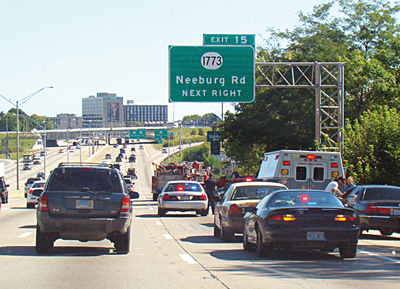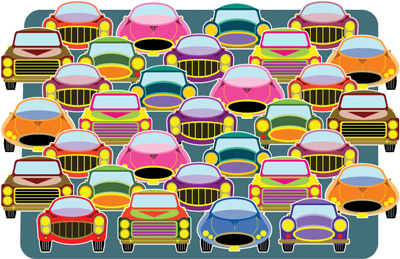SAFETY
If new-car buyers use it
New safety add-ons will force good driving
Thanks to safety innovations, cars today hold up in crashes better than ever, but now automakers are turning their attention from the car to the human doing the driving.
Drivers operate about 250 million registered vehicles in the U.S., and each year there are 6 million reported crashes, and 42,000 fatalities.
According to Mark Rosenker, the National Transportation Safety Board (NTSB) chairman, the number of fatalities has declined in recent years, mainly due to airbags, antilock brakes and seat belts.
But these technologies probably are doing all they can to increase driving safety, Rosenker said.
Enter the new bad driving prevention features, also known as "active crashavoidance" technology.
Here's an example. Most drivers know they ought not to tailgate. Yet, some do. But what if the car itself were smart enough to prevent tailgating?
That's called 'adaptive cruise control' and it's getting some consumer support, says the NTSB.

Last year, a J.D. Power & Associates poll of consumers found 53 percent were leaning toward adaptive cruise control. The system slows down the car if it is moving too close to the vehicle in front of it. A unit located behind the grill determines the speed and distance of the vehicle in front.
When the distance is computed to be safe again, the system accelerates the car back to its last speed setting.
Or if you don't stop before the collision, the brake assist feature will do it for you. Rear end collisions are the most common type of crash.
The poll found that 67 percent of consumers wanted blind spot identification, and 43 percent were likely to order lane departure warnings on their new cars. Lane departure warning helps to avoid the deadliest type of crash, the off-the-road accident.
For those who are doubtful, some car makers allow drivers to turn off the systems. But automakers say drivers will get used to them and use them.
Active crash avoidance technology is here to stay, either with voluntary consumer use or, as many suspect, through future laws and regulations.
Speaking of Safety
'Check Engine?' What's that about?
A lot of things could cause this aggravating light to go on or stay on. The first question is whether the light in your particular car is red or yellow.
In his e-book, What Your Mechanic Doesn't Want You to Know, Austin C. Davis says dashboard lights are like traffic signals. If a red one comes on, immediate attention is required.
Common things indicated by a red light include low fluids, such as anti-freeze, engine oil, transmission and brake fluid. Or there could be problems or faulty sensors related to air bags and emissions components that cause a yellow light.
Your gas cap could be the source of an emissions component's yellow check engine signal. Banging the gas nozzle into the filler neck of your car can damage the opening. Vehicles built since 1996 have an emissions self test system to check the gas cap seal. If it doesn't seal right, the "check engine" light comes on.
The vehicle's computer system selftests each time the car is started. It can correct minor abnormalities itself. If your light comes on after multiple starts, a visit to a diagnostic mechanic is in order.
Unfortunately, the visit is no guarantee that the source of a sensor problem will be located.
5 ways to prevent parking lot dings, dents and injuries

On the highway, high speed causes damage and injuries. But slower speeds can do the same, especially in parking lots where many accidents occur.
According to the Independent Insurance Agents of America, one in five auto insurance claims is for parkinglot damage. Less serious damage to vehicles is often not reported.
The agents give this advice.
- Drive slowly. Watch for cars backing out and for cars cutting diagonally across the lot.
- Pay attention. Don't talk on your cellphone, and don't be hurried when you're waiting for a car to vacate a space. Allow plenty of room.
- Avoid parking next to a very big vehicle. You'll have a hard time seeing when you're trying to back out.
- Park away from the store where you will have plenty of space. You will avoid dents from car doors and shopping carts. Be especially careful in lots that have a high turnover, especially at the post office or a busy convenience store.
- When backing out, check for cars waiting for your spot, cars backing out at the same time and for pedestrians. Don't trust your mirrors. Turn around and look both ways before moving.
If you are the pedestrian, constantly watch for cars. When approaching your own car, have your keys in hand and lock the doors after you get in.
Be aware of your surroundings. If you see suspicious looking people, go back to the store and ask for and ask for an escort.
© 2015 TLC Magazine Online, Inc. |